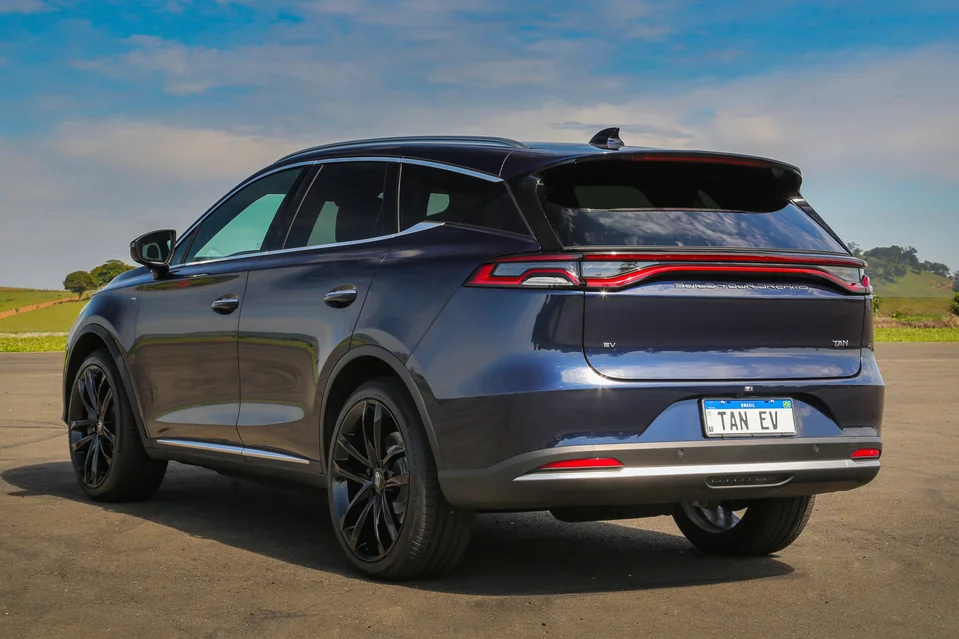In the world of electric vehicles (EVs), safety and efficiency often vie for attention. But what if you could have both? Enter BYD’s Blade Battery, a breakthrough in EV technology that promises to redefine how we think about battery safety and performance. As of 2024, BYD has not only set a new benchmark for what battery technology can achieve but has also captured the attention of the global EV market. In this article, we’ll explore how BYD’s Blade Battery is revolutionizing EV safety, diving into the technology’s unique features, the implications for the industry, and what it means for consumers like you.
The Rise of BYD’s Blade Battery: A New Era in EV Safety
What Makes the Blade Battery Unique?
BYD, one of the world’s largest electric vehicle manufacturers, unveiled its revolutionary Blade Battery in 2020. Fast forward to 2024, and this technology has become a game-changer in the EV industry. But what sets the Blade Battery apart? Here are the key features:
- LFP Chemistry: The Blade Battery uses Lithium Iron Phosphate (LFP) as its core chemistry, known for its superior thermal stability and safety. Unlike traditional lithium-ion batteries, LFP batteries are less prone to overheating and catching fire.
-
Thin and Long Design: The “blade” design refers to the battery’s thin and elongated shape, which allows for better heat dissipation and greater energy density. This design also enhances structural strength, making it more crash-resistant.
-
Temperature Tolerance: The Blade Battery can withstand temperatures up to 572°F (300°C) without experiencing thermal runaway, a common cause of battery fires. This resilience offers peace of mind for drivers and passengers alike.
Real-World Impact: Statistics and Success Stories
As of 2024, BYD’s Blade Battery has been integrated into several of its popular models, including the BYD Han and Tang. According to InsideEVs, these models have seen a 20% increase in safety ratings due to the Blade Battery technology. Moreover, BYD’s global sales have surged, with a 30% increase reported by Reuters Mobility in the last year alone. These figures highlight the growing consumer trust in BYD’s innovative approach to battery safety.
How BYD’s Blade Battery Stacks Up Against Competitors
Comparing the Blade Battery with Traditional Lithium-Ion Batteries
When it comes to safety and performance, the Blade Battery offers several advantages over traditional lithium-ion batteries:
- Safety: Traditional lithium-ion batteries are susceptible to thermal runaway, leading to fires and explosions. The Blade Battery’s LFP chemistry and design significantly reduce this risk.
-
Longevity: The Blade Battery boasts a longer lifespan, with reports indicating it can endure over 3,000 charge cycles without significant degradation, compared to the average 1,500 cycles for traditional counterparts.
-
Cost Efficiency: While initial costs may be similar, the Blade Battery’s longevity and safety features make it a more cost-effective solution in the long run.
Global Implications and Industry Shifts
The Blade Battery is not just a win for BYD; it’s a potential catalyst for industry-wide change. As noted by Bloomberg Green, other manufacturers are taking notice, with companies like Tesla and Volkswagen exploring similar LFP technologies. This shift could lead to more affordable and safer EVs, accelerating the transition to sustainable mobility worldwide.
Practical Tips for Prospective EV Buyers
What to Consider When Choosing an EV with Blade Battery Technology
- Safety Ratings: Look for vehicles with high safety ratings, particularly those outfitted with Blade Battery technology.
-
Battery Life and Warranty: Check the warranty period for the battery and the expected lifespan in terms of charge cycles.
-
Charging Infrastructure: Ensure that there are adequate charging stations in your area, especially ones compatible with LFP technology.
Where to Buy and What to Compare
-
Compare Models: Consider BYD models such as the Han and Tang, and compare their features, range, and pricing against competitors using traditional batteries.
-
Dealer Networks: Visit authorized BYD dealers to explore options and take test drives. The hands-on experience can provide insights into performance and comfort.
Conclusion: The Future of EV Safety with BYD’s Blade Battery
In summary, BYD’s Blade Battery is setting new standards in EV safety and performance, offering a robust alternative to traditional lithium-ion batteries. With its innovative design and chemistry, the Blade Battery addresses longstanding concerns about safety and longevity, positioning BYD as a leader in the race towards sustainable transportation. As we move further into 2024, it’s clear that the Blade Battery not only enhances EV safety but also paves the way for broader industry changes.
Are you considering making the switch to an EV with Blade Battery technology? Share your thoughts and experiences in the comments below. And keep an eye on this space for the latest updates on how BYD and other innovators are shaping the future of clean energy transportation.

